Skokie: The legacy of the would-be Nazi march in a town of Holocaust survivors
The scene that unfolded in Charlottesville in 2017 resonated for one town.
The images of neo-Nazis marching in the streets of Charlottesville, Virginia, last summer served as a wake-up call for many Americans who thought that such shocking displays of hate were in the past.
But while the "Unite the Right" rally in Charlottesville, which left one woman dead, may be the most recent example of such hate, it wasn't the first time neo-Nazis have come out in force in America.
Forty years ago, in the Chicago suburb of Skokie, a planned Nazi march through a town full of Holocaust survivors led to a years-long legal battle over religious liberties and the strength of the constitution. While hate groups were ultimately not allowed to march on Skokie, their message still resonates with white supremacists and members of the far-right today, according to Heidi Beirich, the director of the Intelligence Project at the Southern Poverty Law Center.
"Skokie was a planned decision by Nazis basically to pick a place to come together in public force and assert their First Amendment rights ... but also to assert that they are a powerful force in American politics, and Charlottesville was exactly the same thing," Beirich told ABC News.
Although the message behind both marches was similar, there was one major difference: the neo-Nazis never ended up taking to the streets in Skokie.
Why Skokie?
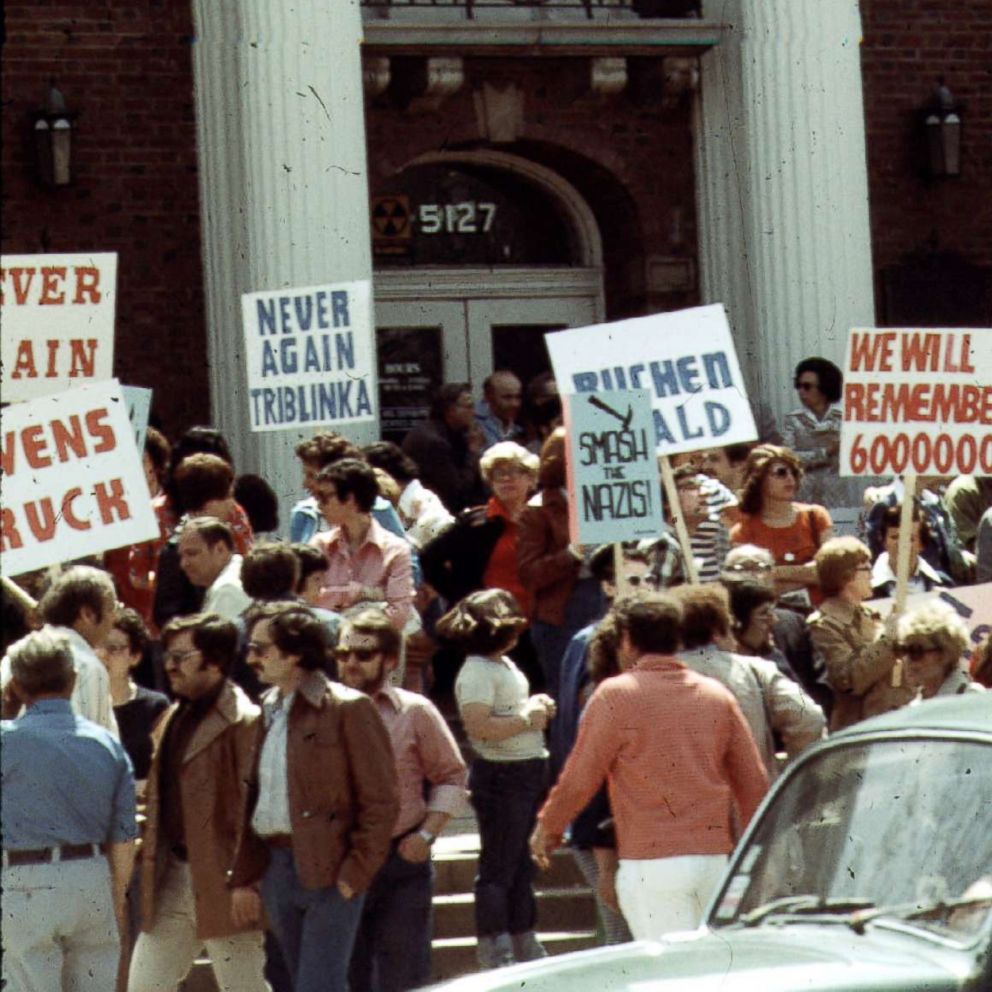
The residential, tree-lined Midwestern suburb about a 45-minute drive north of Chicago might seem like an unusual pick for a hate-filled debate over the First Amendment, but it had less to do with the place than the people who lived there.
While Charlottesville was chosen by far-right groups as their battleground in 2017 because of the city's plans to remove a statue honoring Confederate Gen. Robert E. Lee, Skokie was chosen as the hub for American neo-Nazis in 1977 and 1978 because of the number of Holocaust survivors who called it home.
The exact number of survivors who lived in Skokie at the time remains disputed, but current mayor George Van Dusen told ABC News that it had "the largest number of Holocaust survivors outside of Israel," a refrain repeated in much of the reporting about Skokie both at the time and in the years since.
One estimate cited in a court filing from the time said that roughly 40,500 of Skokie’s 70,000 residents were Jewish, although the number of Holocaust survivors were believed to a fraction of that number, according to "When the Nazis Came to Skokie," a legal analysis by Philippa Strum. The most widely reported estimate was that there were 7,000 survivors in Skokie in 1977 and 1978, according to the Illinois Holocaust Museum.
It was because of the large number of Holocaust survivors that American neo-Nazi Frank Collin reportedly chose Skokie as the location for his march. Collin was the leader of the National Socialist Party of America and in 1977, he decided that his group was going to use their constitutional rights to freedom of speech and peaceful assembly to march in Skokie and make their voices heard.
Neo-Nazis 'goose-stepping down a major street'
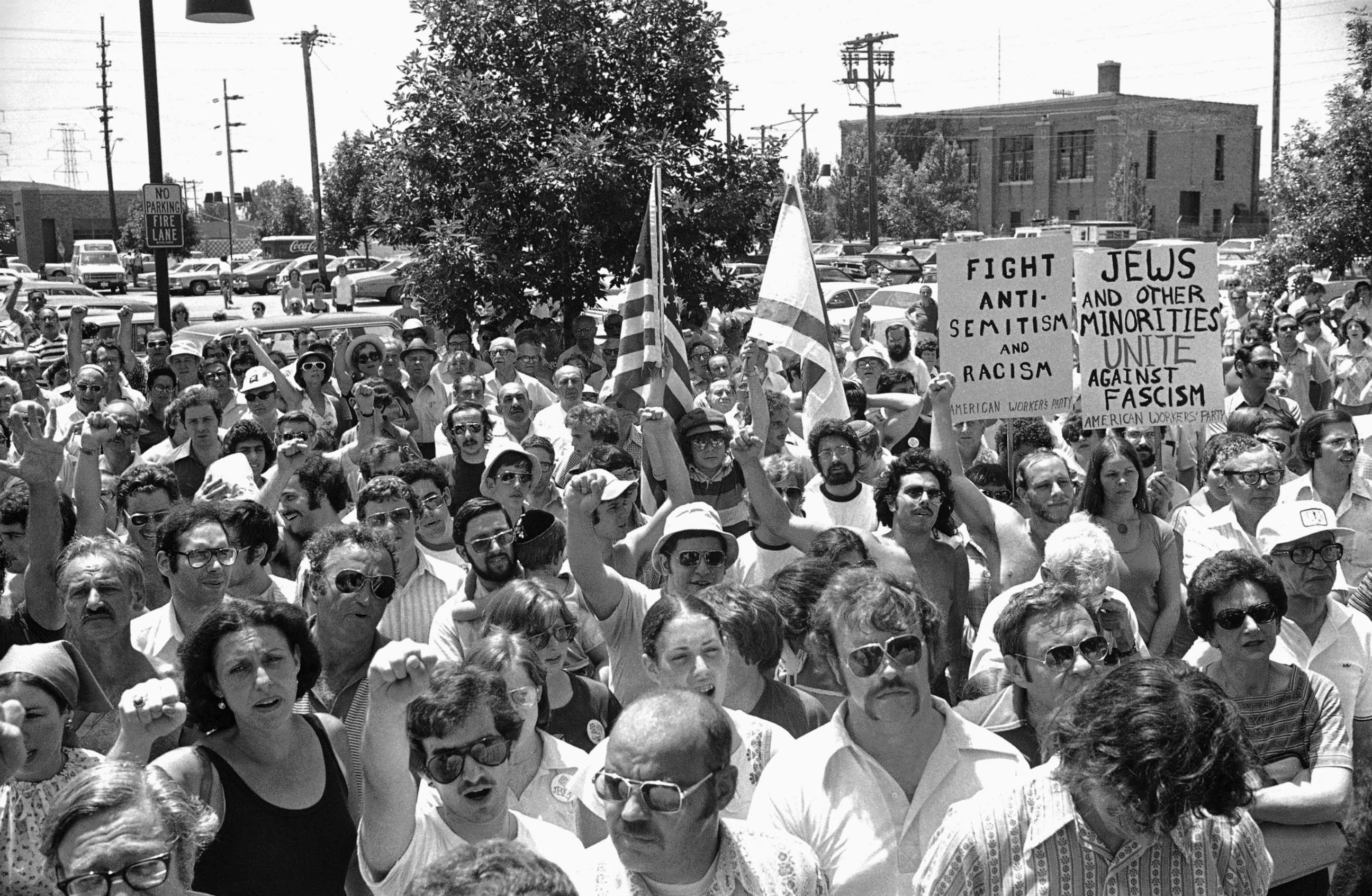
The timing of Collin's call to action was unnerving not only for local Jews but for World War II veterans across the country, Van Dusen said.
"It was not that long after the second World War and a lot of people, not just in the Chicago area but across the country, were GIs, so the war experience was something that got everybody's attention. The thought that Nazis could be goose-stepping down a major street in an American city was something that caught everybody's attention," he added.
Kenneth Jacobson is the deputy national director of the Anti-Defamation League. He also worked out of the ADL's New York office at the time of the Skokie debate.
"Jews were feeling a level of equality unmatched anywhere else," Jacobson told ABC News.
"Jewish life in America started to reach the pinnacle that it reached later, between 1950 and the 1970s," Jacobson added, citing gains that were made against housing and employment discrimination, among other factors.
Jacobson said that many saw the threat of a Nazi march as a "psychological assault on the Holocaust survivors."
"The pain of the Holocaust was still so raw and unforgettable," he said. "Here they came to America trying to start new lives ... and then for it to be thrown right in their faces -- in their own neighborhood -- was just too much."
Weighing legal issues with personal ones
But one Jewish person who stood up for Collin's right to march was David Goldberger, his lawyer from the American Civil Liberties Union.
Goldberger said he saw the case as one that posed a threat to constitutional liberties if it weren't defended.
"I was very outspoken, as was the entire ACLU, about the First Amendment right of the Nazis to hold a peaceful assembly," Goldberger told ABC News.
But not everyone saw it that way.
"It didn’t make people very happy," Goldberger said of his decision as a Jewish lawyer to represent the Nazi leader in court.
Some board members of the ACLU resigned, Goldberger said, and members from a different legal group "came to our office with ball bats at one point." Goldberger also said he received threatening calls and felt it necessary to have a discussion with the sheriff about whether or not he should buy a gun for his own protection.
Taking the case "was not a fun decision, but I really believed and still believe that the First Amendment was core to a democracy," Goldberger explained.

A county court originally issued an injunction banning the marchers from wearing Nazi uniforms or swastikas at a demonstration in Skokie, then the state supreme court and appellate court refused to allow an appeal or overturn the injunction.
Finally, the U.S. Supreme Court weighed in, saying that because First Amendment rights were at stake, the lower courts in Illinois should have implemented strict procedural safeguards, such as an expedited appeal, and had to take another look back at the case.
The public attention -- and outcry -- about the case turned it into a famous one in legal circles, said Gene Policinski, the president of the Freedom Forum Institute who also leads its First Amendment Center.
"I wasn’t even in the First Amendment business at the time, but it’s one of those seminal cases that you have to know about," Policinski told ABC News.
Later, the Illinois courts narrowed the injunction, allowing the use of Nazi uniforms but maintaining the ban against displaying swastikas. The Illinois Supreme Court ultimately overturned that injunction.
"The public presumed the Supreme Court said it was okay for the Nazis to march; they did not do that," Policinski explained.
'Fear, loathing but little else'
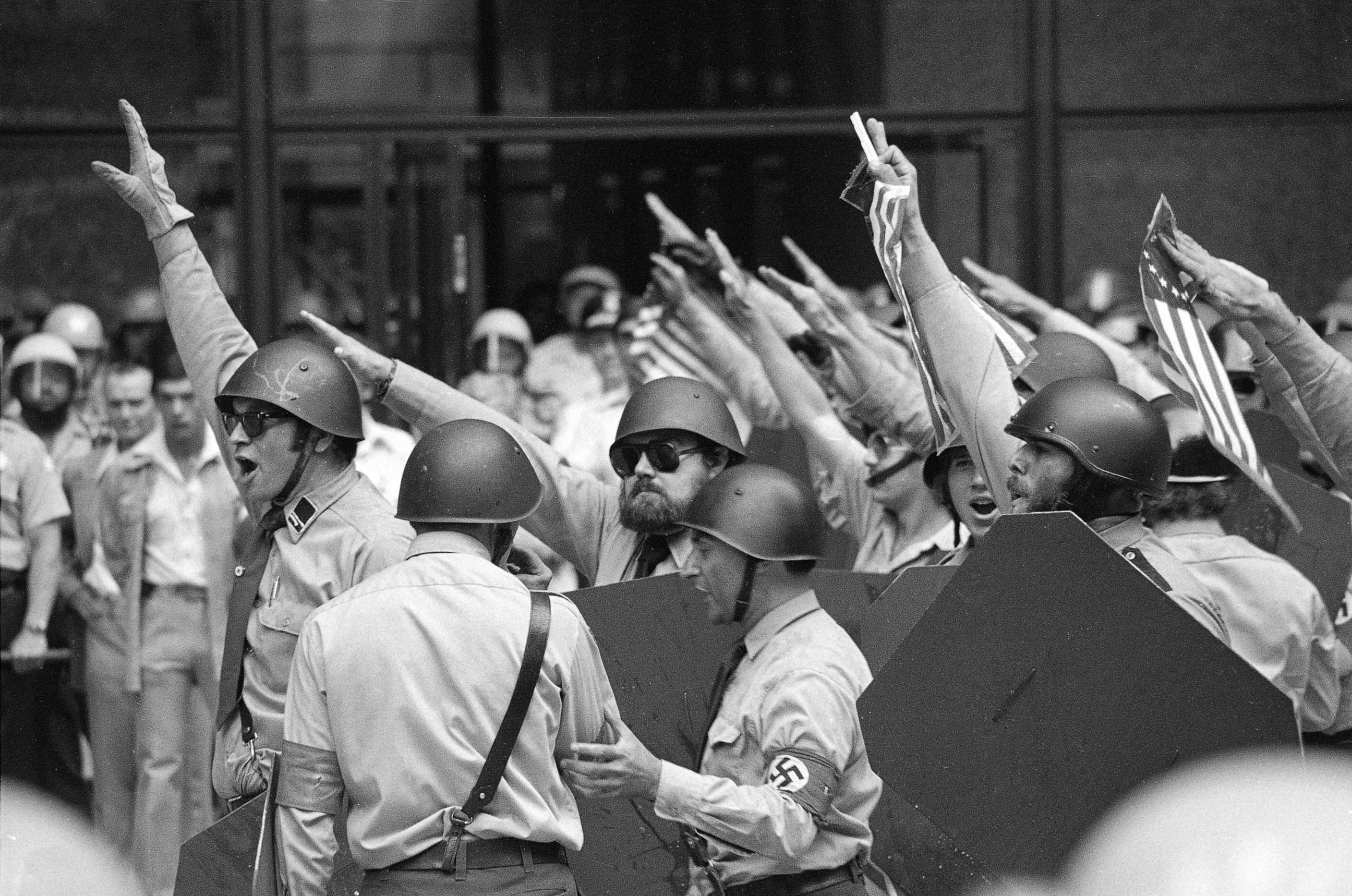
In spite of that legal win, the blowback from the case nationwide and dissent within the ranks of Collin's Nazi group contributed to his decision to ask to move the march from Skokie to Chicago, Strum wrote in "When the Nazis Came to Skokie."
On the day of the march itself -- June 24, 1978 -- counter protesters made more of an impact than the National Socialist Party members.
The New York Times estimated that a crowd of 2,000 counter protesters "drowned out" Collin and the roughly 20 group members who showed up to march with him in front of a federal building in Chicago.
The Chicago Tribune reported that the rally "sputtered to an unspectacular end after 10 minutes."
The paper's headline read: "Fear, loathing, but little else, at Nazi rally."
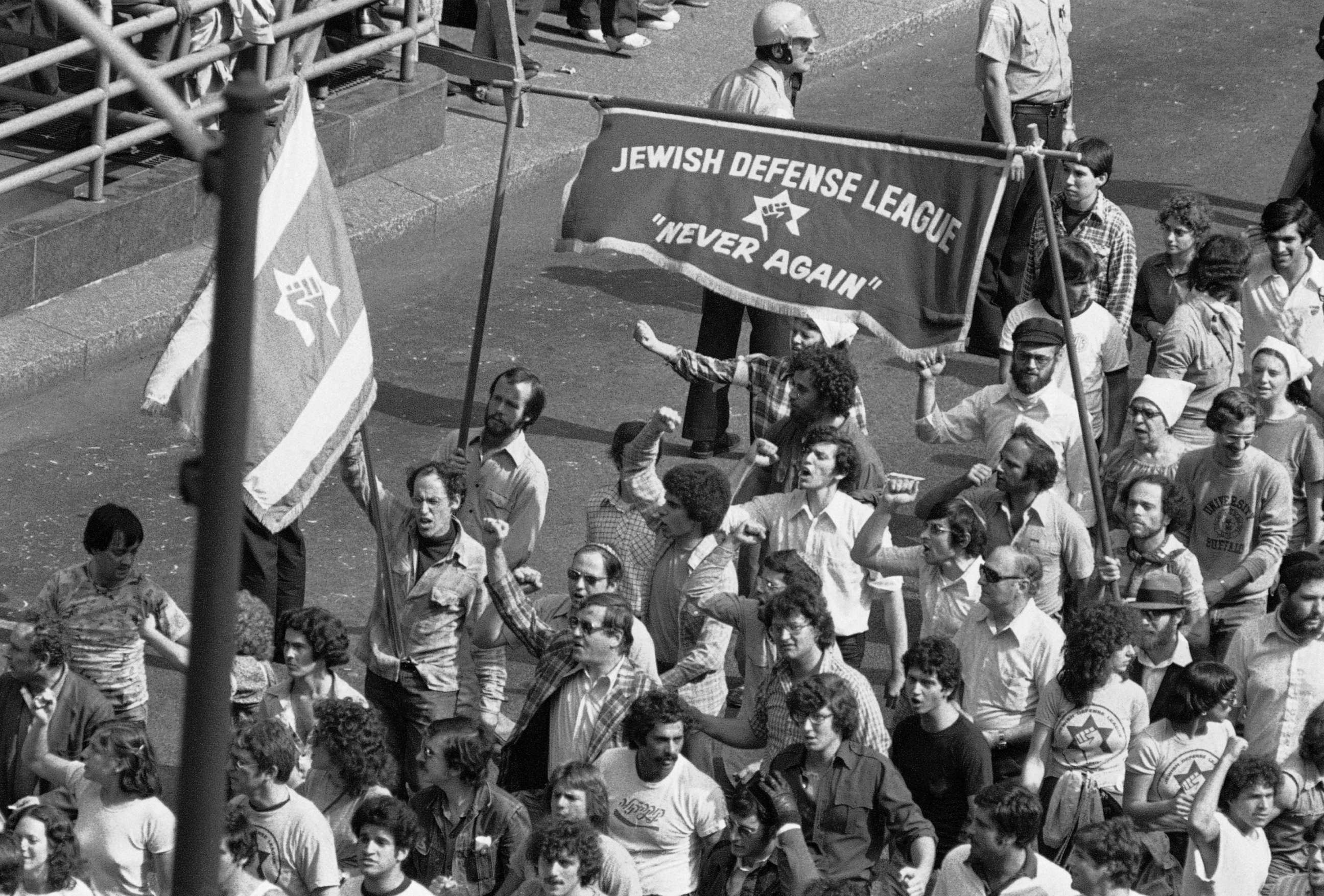
The legacy of the march in the place where it didn't happen
Even though the march didn’t actually happen in Skokie, the town has become inextricably linked with the court battle that followed. Just three years after the saga unfolded, it got the Hollywood treatment, with a movie titled "Skokie" starring Danny Kaye, Eli Wallach, and Brian Dennehy.
And according to Beirich of the Southern Poverty Law Center, an organization that tracks hate groups, the incident earned the ACLU some respect in the eyes of white supremacists and neo-Nazis.
"The only way you see the ACLU mentioned in a positive way by white supremacist circles is in reference to Skokie," she said, noting that they view it as an example where lawyers had to "enforce our constitutional rights."
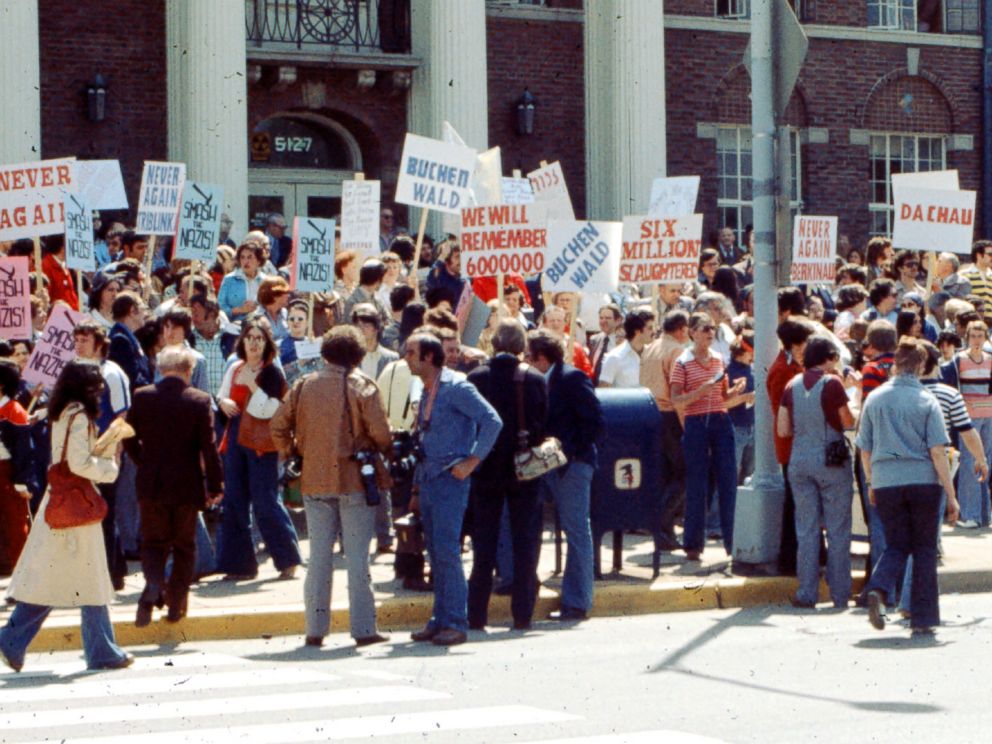
In the town itself, the legacy of the march lives on.
"The village became attached to what happened," Van Dusen, Skokie's current mayor, said. "But looking back on it from the perspective of 40 years now, there were some very positive things that came out of it."
Van Dusen said that before the battle over the march, Holocaust survivors in the community "were a very quiet group, they went about their business starting families" and "never talked about their horrid experiences."
"But this brought it out and as a result of that, it ignited a passion in them and they established … the [Illinois] Holocaust Museum," Van Dusen said.
The Illinois Holocaust Museum and Education Center started out as just a storefront in 1981 and evolved through the decades. Former President Bill Clinton attended the new building's dedication ceremony in 2009.
Beyond the creation of the museum, Van Dusen said that the town's various faith communities started working together more after the fight over the march. The townspeople are proud of their legacy of tolerance, though that is still tested by world events that can cause flashbacks to the past.
"The entire community was horrified by what happened in Charlottesville, and I think saying horrified doesn’t quite describe the reaction. It dredged up historic memories of the Nazis," Van Dusen said. "When something like Charlottesville happens or when the parishioners were killed in the church in South Carolina [in 2015]... it strikes a chord in Skokie and it’s hard to describe, but it's spontaneous and people are very much aware of the reality of white supremacy and the hatred that comes with it."



